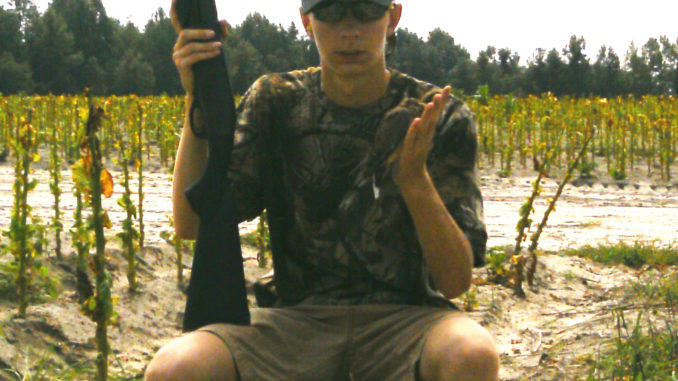
Dove hunting has become as much of a social gathering as a hunt over the past 20 years. The promise of a barbecued pork, chicken and all the fixing’s highlights many hunts over Labor Day weekend. Because of this, many new hunters, especially young ones, are introduced to the sport each year.
With this influx of inexperienced hunters, safety becomes a major factor. It is important to become familiar with the people with whom you will be hunting. Often, when one learns of a novice hunter in the party, advice is provided on how to lead the bird, where the birds will likely come from and go, and even where a good spot in the field might be.
First and foremost, safety should be the lead topic of conversation.
If hunting with a new hunter, it does not hurt to start out hunting side by side. Point out where other hunters are located and explain the damage that can be done by a carelessly aimed shot, especially when hunters are in close proximity.
Point out how high a bird needs to be flying in order to shoot. Early on in the hunt, set up a rule of calling out “low bird” if there is a dove flying too low to shoot. Encourage the new hunter to call it out as well. Not only will this keep the safety mindset a priority, but it will also notify other hunters located across the field that a bird is flying too low.
Explain where the zone of fire is located for the two of you. Since dove hunts are primarily done from stools or seats, find out if the hunter wants to shoot standing or sitting down.
Remind the new hunter to always keep the safety on until ready to shoot. Do not hesitate to ask if the safety is on after he or she has fired at a bird.
After the new hunter has taken his first bird, go in the field with him to retrieve it, once again pointing out where other hunters are. When birds are spotted flying while retrieving, kneel in the field to remain low to conceal yourself from the flying dove as a courtesy to other hunters.
Determine what shot each hunter is using, and never share ammunition. A 20-gauge shell fits nicely into a 12-gauge shotgun’s magazine and can become lodged in the barrel. In heavy action, it is too easy to load a 12-gauge shell behind a 20, resulting in firearm damage, injury and/or even death.
Lastly, avoid alcohol and drugs, including prescription drugs, that may alter awareness.



Be the first to comment